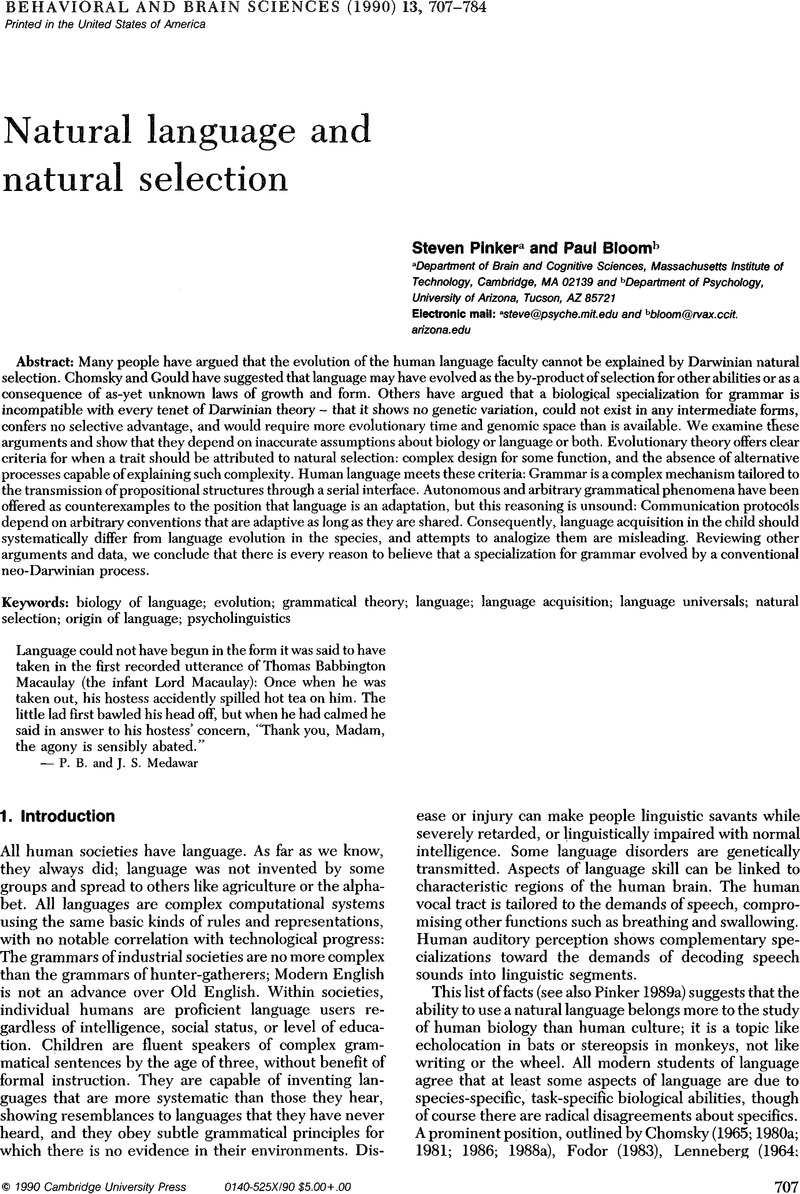Crossref Citations
This article has been cited by the following publications. This list is generated based on data provided by Crossref.
Botha, Rudolf P.
1997.
Neo-Darwinian accounts of the evolution of language: 2. Questions about complex design.
Language & Communication,
Vol. 17,
Issue. 4,
p.
319.
Botha, Rudolf P.
1997.
Neo-Darwinian accounts of the evolution of language: 1. Questions about their explanatory focus.
Language & Communication,
Vol. 17,
Issue. 3,
p.
249.
Nichols, Shaun
and
Grantham, Todd
2000.
Adaptive Complexity and Phenomenal Consciousness.
Philosophy of Science,
Vol. 67,
Issue. 4,
p.
648.
Botha, Rudolf P
2002.
Did language evolve like the vertebrate eye?.
Language & Communication,
Vol. 22,
Issue. 2,
p.
131.



